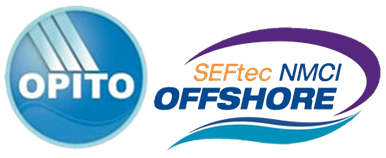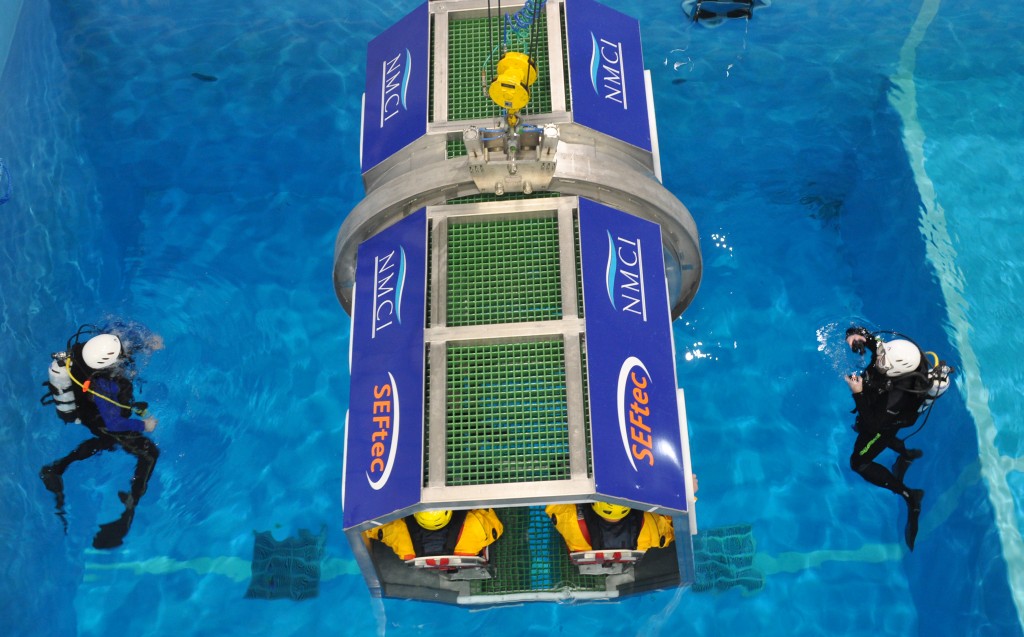Posted: February 11, 2013
Australia’s oil and gas workers enjoyed the highest average salaries in the industry in 2012 due to a skills shortage, with expatriates pocketing $171,000 a year, a study said on Friday.
Despite uncertain global economic conditions, wages in the oil and gas industry rose globally by 8.5 percent in 2012 to $87,300, according to Hays Oil and Gas Job Search. That follows an average increase of 6.5 percent in 2011.
“There would be few industries with such a track record of growth over the last few years in what has been, in the most part, an uncertain economic environment,” the report said.
World oil production in 2012 grew by 2 percent from the previous year to 89.17 million barrels per day and is expected to increase 1 percent this year, according to the U.S. Energy Information Administration.
Expatriates in Australia topped the list, and Norway came second, according to the survey, conducted among more than 25,000 employees. Among local hires, Australians workers were also the highest earners, with an average wage of $163,600.
“At the top of this year’s table, we once again see Australia and Norway. Both countries have limited skilled labour pools and significant workloads. The result is very high pay rates, although both would appear to have met some sort of ceiling,” the report said.
Australia is preparing to become one of the world’s largest liquefied natural gas (LNG) exporters, with 190 billion Australian dollars ($196.2 billion) worth of projects currently underway, requiring a vast workforce.
The average wage in the United States was significantly lower at $123,800. At the other end of the spectrum were expatriates in Sudan, who according to the survey, earned $59,800 in 2012. Wages tumbled in Iran, whose oil and gas production contracted last year as a result of Western sanctions over its disputed nuclear programme. The average expatriate salary in Iran dropped 27 percent in 2012 to $68,100, while the average for local employees fell 10 percent to $46,900, the study found. “Where imported salaries are concerned, it is once again the frontiers of the industry that are pushing the upper limits of pay. Representing a mix of danger money and hardship allowance in these base salaries, we find Russia’s Arctic exploration driving imported skills, and China’s drive on non-conventional skills also pulling in experts on premium rates,” Hays Oil and Gas Job Search said. The risks involved in some exploration and production regions were laid bare last month in Algeria, where Islamist gunmen attacked a gas plant, which led to the deaths of at least 38 local and foreign workers. Expatriate salaries in Algeria averaged $92,400 last year, according to the survey, which was conducted before the attack. As for areas of expertise, vice presidents and directors of subsea pipeline projects earned the highest average wages at $251,200, up 9 percent from 2011. Graduate salaries increased 12 percent to just under $40,000 in 2012. In an industry counting around 5 million people across the world, 47.4 percent are expatriates, with the remainder employed locally, the report said. ( C) Reuters
For more information and news please see http://www.fxcentre.com/news.asp?3033334
Sign Up to our Newsletter
Click Here
Posted: October 5, 2011
We are now taking bookings for the next OPITO Approved Offshore Courses.

- Minimum Industry Safety Training (MIST) – Oct 17th & 18th
- Basic Offshore Safety Induction and Emergency Training (BOSIET) Oct 19th -21st
- Further Offshore Emergency Training (FOET) Oct 28th

Our BOSIET comprises of Sea Survival, Fire fighting and Self Rescue. During the BOSIET delegates are also put through their paces on the HUET,(Helicopter Simulator) which is preparation training in the event of that the helicopter is required to ditch.
Our BOSIET is fully approved by the Offshore Petroleum Industry Training Organization (OPITO). OPITO currently operates in 32 countries around the world and brings with it over 30 years of experience in maritime training.
For more information please call us on: 021 497 0609, book online at: www.nmci.ie, or email: info@seftecnmcioffshore.com
To sign up to our newsletter click here – http://www.nmci.ie/newsletter-signup
Sign Up to our Newsletter
Click Here
Posted: September 30, 2011
Our Head of Commercial Wet Course Development and Training, Ray Johnston recently appeared in the RTE show “Rescue 115” training the Irish Coast Guard Search and Rescue crew.
The Irish Coast Guards regularly simulate lifesaving exercises at the college in preparation for search and rescue operations in some of the most hostile sea environments in the world.
The show takes place over a number of months and is a six part series. It follows the rescue crews at Shannon Helicopter base, as they battle to save lives around the Irish coast.
This week’s episode follows the Irish Coast Guards latest recruit as he has his world turned upside down while completing the Helicopter Underwater Egress Safety Training with Emergency Breathing Systems in the SEFtec configurable HUET.
The show follows his training to become a Winchman in the Shannon Helicopter base which includes interviews, paramedic training and medical, physical and physiological tests. But before he can save lives he has to learn a drill he hopes he never has to use, which is learning how to react in the event of a helicopter ditching.
Click on the image below to watch the show.

Helicopters are top heavy and because of this when a helicopter crashes into the sea it may roll over upside down in the water and in preparation of this event all crew must be trained in exiting the helicopter safely in this unnatural situation.
The HUET training is what will save their lives in the unlikely event of a helicopter ditching, this special course is held here at the National Maritime College in a specially built tank in a replica helicopter cock pit.
Daithí Ó Cearbhalláin, Senior Crewman of Rescue 115 said “Every crew man, every pilot has to complete this every three years so all of crews rotate through this using this facility here.” “It’s a great exercise, absolutely invaluable it teaches the boys what they have to do in regard to action training that in a real emergency you would follow through with these drills without thinking”.
Commenting on his HUET experience, the delegate said “The most surprising thing for me was being inverted, being upside down and trying to get your brain to tell you to breathe when it is telling you not to breathe because you are under water”.
To sign up to our newsletter click here – http://www.nmci.ie/newsletter-signup
Sign Up to our Newsletter
Click Here
Posted: August 5, 2011
SEFtec NMCI Offshore Training Ltd, specialists in offshore training, recently visited the E-ON Offshore Wind Farm, the ‘Robin Rigg’. This is located just off the coast of Workington in Cumbria.
E-ON UK is the UK’s leading energy company and they are one of the UK’s leading energy suppliers and the second largest electricity generator in Britain. They are part of E-ON; the world’s largest investor-owned power and gas company, which has its headquarters in Germany.

Caption L to R: Annette Coughlan, Programme Executive (SNO) Sally Shenton, Site Manager, Jason Hall, Business Development UK.
In the UK E-ON’s focus is on wind, both onshore and offshore, dedicated biomass and marine. Currently, they have 18 operational onshore and three offshore wind farms. In 2007 they completed construction on one of the UK’s largest dedicated biomass power stations, the award winning Steven’s Croft in Lockerbie. Robin Rigg, the third and largest offshore wind farm in the UK is located in the Solway Firth and became operational in 2010.
The recent visit to the “Robin Rigg” which was very kindly arranged by Sally Shenton -Site Manager; proved to be quite beneficial and without a doubt will impress upon us what elements of training are most relevant to technicians, engineers etc and those who are tasked to work in such environments.

E-ON Wind Farm
SEFtec NMCI Offshore Training Ltd are specialists in Offshore training as are in the process of achieving Renewable UK’s MST( Marine Safety Training) standard which is a crucial step for the NMCI in 2011. Our ambition is to be a centre of excellence in offshore renewable training for the Irish and the British Isles as a whole.
To sign up to our newsletter click here – http://www.nmci.ie/newsletter-signup
Sign Up to our Newsletter
Click Here
Posted: May 27, 2011
SEFtec NMCI Offshore Training Limited are to attend the Renewable UK Offshore Wind 2011 conference on the 29th of June.
 We will be joined on the day by over 160 companies, and over 2,500 delegates are expected to attend. Delegates will include senior government officials, investors, financiers, manufacturers, developers and all others with an interest in the latest developments in the offshore wind energy sector. read more…
We will be joined on the day by over 160 companies, and over 2,500 delegates are expected to attend. Delegates will include senior government officials, investors, financiers, manufacturers, developers and all others with an interest in the latest developments in the offshore wind energy sector. read more…
Sign Up to our Newsletter
Click Here







Connect with NMCIS